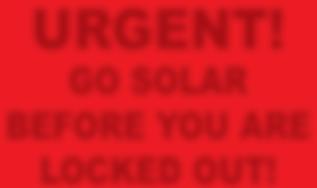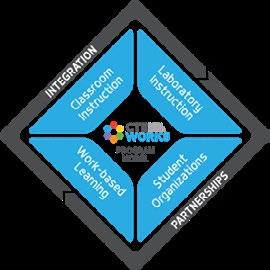
11 minute read
Health
3 reasons for making WellphoraTM your go-to CBD source.
Why do so many people trust Wellphora as their source for CBD? One, all of our products are 3rd-party, triple-lab tested. Two, we use all organic ingredients, and three, we manufacture right here in Arizona. Plus, our FREE SHIPPING is perfect for those looking to minimize their shopping trips!
Visit us at www.wellphora.com and get FREE GUMMIES (a $35 value) with purchase of any 1000mg or 2500mg CBD Oil! Use coupon code GUMMIES21 at checkout.*
*Offer valid through March 31, 2021
FIREFIGHTER AND VETERAN OWNED
MAD E IN
©2021 Novas Labs LLC All rights reserved. wellphora.com

Health
Four Ways to Prevent the Flu
By Dr. Stephanie M. Seitz, ND, MT
Many people recognize flu season as fall and winter, but February is typically the peak of flu activity. With the ongoing coronavirus pandemic, it’s more important than ever to stay healthy, so how can we prevent getting sick? Here are a few simple steps to keep yourself well during the peak of the flu season.
WASH YOUR HANDS
The pandemic has shone a light on the importance of hand washing, and for good reason. Washing your hands often is the easiest and most effective way to prevent the spread of germs. As a rule of thumb, it’s best to wash your hands before and after touching your face, touching your mask, touching a surface that’s frequently touched by others and, of course, after using the restroom. Germs can live on surfaces for two hours or more, so it’s important to wash your hands thoroughly with soap and water for at least 20 seconds. If you don’t have access to soap and water, an alcohol-based wipe or hand sanitizers are good alternatives.
INCORPORATE VITAMIN D
According to research by the American Journal of Clinical Nutrition, vitamin D plays a role in reducing your likelihood of developing the flu. However, most Americans are deficient in this vitamin, which can lead to rickets, poor immune system function, and risk of cardiovascular disease. Vitamin D storages can be increased by exposure to sunlight, eating fish, egg yolks, beef liver or taking supplementation. However, you should have your blood checked by your physician before supplementing as too much vitamin D can be toxic and can damage your kidneys.
STAY HYDRATED
Staying properly hydrated can support the immune system and allow it to defend your body from viruses. Drinking at least half your body weight in water in ounces is a great way to stay hydrated which enables your body to fight off the flu. It will also help improve your quality of sleep, cognition and mood. If you have a hard time drinking enough water, consider adding your favorite fresh fruit to the water to provide flavor or a marked water bottle to give you goals to hit throughout the day.
EAT A HEALTHY DIET
Eating a diet rich in fruits and vegetables can help support the immune system by providing your body the central nutrients it needs to function properly. The immune system protects the body from infection, so giving the immune system the power it needs to defend the body can help keep you healthy during the flu season.
The flu is highly contagious and spreads through respiratory droplets that are produced when speaking, sneezing, or coughing like the coronavirus. Adding these steps in addition to CDC guidance to prevent the spread of coronavirus, like wearing a mask and social distancing, will help keep you healthy through the end of flu season.
Dr. Stephanie Seitz, ND, MT with Southwest College of Naturopathic Medicine & Health Sciences has extensive training in a variety of treatment modalities including homeopathy, botanical medicine, clinical nutrition and acupuncture.

Health
Dispelling Heart Disease Myths During American Heart Month
By Nikhil Iyengar, MD
Having trouble distinguishing fact from fiction when it comes to heart disease? You’re not alone. Here are ten common myths.
1. MYTH: Heart disease medications do more harm than good. FACT: While no one wants to take medications, they can be incredibly helpful in preventing, treating and/or managing heart disease. Before medications become treatment options, they’ve been rigorously studied, and the results have shown that those who took the medication had better health outcomes than those who did not.
2. MYTH: A lifetime of good health means I won’t get heart disease. FACT: Heart disease can build slowly, or it can develop suddenly. Past health status does not necessarily indicate future health. The reasons why some people develop disease and others don’t aren’t always explainable. It’s important to realize that our health is always changing. 3. MYTH: I can’t get heart disease if no one in my family has/had it. FACT: Diseases develop for a variety of reasons. Some are related to genetics and others are tied to environment and lifestyle factors. Not having a family history of heart disease is not a guarantee that you won’t get it. 4. MYTH: I don’t need medication since I eat a healthy diet. FACT: What’s considered a healthy diet for one person may not be for the next. The availability of medication that’s effective in lowering cholesterol has spurred the Food and Drug Administration to be more lenient when it comes to dietary restrictions on cholesterol. However, this does not mean we have permission to eat cheeseburgers at every meal. 5. MYTH: Taking medication to lower blood pressure leads to feeling sluggish. FACT: Failure to manage high blood pressure can have life-threatening consequences. It may feel great when you’re doing it, but it’s very bad for the long-term health. The same can be said for your body when you’re living with high blood pressure. You may feel a bit tired when your blood pressure is being lowered, but you’ll reap a lot of health benefits.
6. MYTH: Quitting smoking means it no longer has an impact on your risk of heart disease. FACT: Acute heart disease risk seems to drop when a person stops smoking, but the chronic changes related to smoking likely continue to affect your body and the health of your organs and internal systems. 7. MYTH: Red wine is good for the heart and vascular system. FACT: While it was once widely believed that red wine offered some health benefits for the heart and vascular system, recent studies show no significant benefit. 8. MYTH: Women have a greater risk of developing breast cancer than heart disease. FACT: The Centers for Disease Control and Prevention cite heart disease as the No. 1 cause of death among women in the U.S. A woman’s cycling hormones provide protective health benefits, but once a woman goes through menopause her risk of heart disease becomes higher than a man’s. 9. MYTH: Procedures to fix a heart problem means no further treatment is needed. FACT: Procedures such as stent placement or bypass surgery are done to correct an acute manifestation of a chronic condition. Preventing future acute episodes requires a mix of exercise, diet and medication.
10. MYTH: Firsthand experiences from friends, family and/or the internet offer reliable information on managing heart disease. FACT: Despite having a wealth of information about heart disease prevention and treatment at your fingertips, nothing is more beneficial than input from a physician who knows you and is invested in helping you live a longer, healthier life. Work with a trusted health professional to make sure the information you’re getting is current and that your care plan is being guided by an expert in the field.

100 years ago! 1921
The first radio baseball game was broadcast. Harold Arlin announced the PiratesPhillies game from Forbes Field over Westinghouse KDKA, in Pittsburgh. The Pirates won, 8-5. This started to pave the way to get more than just news out to the public! Mountain View Hospice uses many avenues to give you the best information to make informed decisions.
Hospice: Myth vs Fact
Myth: Hospice means giving up Truth: The hospice benefit provides patients and families with choices and the hospice team serves to educate them on palliative care, serve as a guide, and help prepare the patient and family. Myth: BIGGER is better. Truth: All hospices are mandated to provide the same services. Some decide to remain small to ensure that they can provide well-managed care on a more intimate level.
To be entered into our quarterly drawing: Go to our Facebook page @MountainViewHospiceand “follow & like” our page then send a message through Facebook letting us know you have submitted for the quarterly drawing.
If you are not tech savvy stop by our office to collect some Mountain View Hospice swag and leave your name and information with our Admissions Coordinator to be entered into our drawing.
DRAWING WILL OCCUR ON FACEBOOK LIVE IN APRIL!!!
8263 W Thunderbird Rd #120, Peoria, AZ 85381 office 623-230-3698 fax 623-215-6042
MOUNTAIN VIEW HOSPICE HAS A 5 STAR GOOGLE RATING!
New Limit Soon To be Imposed on Homeowners That Want to Go Solar
By Erick O’Donnell
Ever since the 1980s, when scientists fi rst start to warn publicly of the dangers posed by global warming, the need to replace our carbon-belching system of power generation with clean renewables has been inherently urgent. One might think the fate of our planet’s eco system – not to mention the human populations that depend on their stability – should suffi ce to nudge people into embracing solar energy, the planet’s most abundant potential power source, yet regulators and lawmakers seems determined to come up with ever-more-creative ways of adding artifi cial urgency to the choice to go solar.
Since the Arizona Corporation Commission voted in favor of APS’ 2016 request to pay owners of rooftop solar less for their power than what they sell it for, thereby initiating a new regime in steadily falling annual compensation for solar customers, that urgency has been relative: Do I want great fi nancial rewards this year or just good ones next year? But, with a new rule going into effect soon, homeowners now face an absolute barrier to access that depends on the total power being generated by solar panels in their community, with no certainty over how soon they will indefi nitely shut out of the opportunity to go solar.
The new rule limits the proportion of solar-generated electricity allowed to exist within an area served by a substation to 15 percent of its peak capacity. That means that once 15 percent of a service area’s total electric current is supplied by rooftop solar, everyone else who might want to go solar may be left out in the cold.
The rule technically went into effect February 2020, but implementation has varied somewhat by utility; for example, Tucson Electric Power (TEP) has already started screening applications to determine whether their areas are still eligible for new solar installation, but APS has yet to announce an actual start date.
Val Berechet, president of Sunsolar Solutions, a leading local solar sales and installation company, is urging his sales force to emphasis the urgency of going solar now before areas get effectively locked out. When TEP began implementing this new screening and review process last year, dozens of homeowners were denied their solar applications with the utility, even after having already signed up to have solar installed on their homes. Once the new policy is put in place with other Arizona utilities, it is expected that other areas of Arizona will hit their maximum quickly, though it is too early to know where and when with any specifi city.
Some areas served by APS are sure to be at their allowed imposed limit as soon as the utility starts evaluating applications under the new rule. Buckeye and North Peoria are especially saturated with rooftop solar, Berechet said. “It’s a really bad situation honestly, for both homeowners and everyone in the solar industry,” Berechet said. “It’s almost surreal. We have one customer who just last week was permitted by the city to have their solar system installed,” he said. “Tomorrow, we have to call this customer and cancel their project because the utility denied his solar application due to this new rule.”
The essential environmental and economic factors still favor solar power in Arizona. The state has the third lowest cost per watt for solar panels, and it has the second highest potential solar resources, just after Nevada, according to U.S. Energy Information Agency.
Yet state regulatory decisions have proven to be a drag on solar’s expansion in what should be one of the most favorable environments for the technology. Data from the Solar Energy Industries Association shows yearly residential installation rising steadily from 2010 to 2017 (the year the state’s utilities started paying less for solar-generated electricity than what they sell it for) and slowing declining or stagnating in the years following.
Only time will tell how this new restriction will affect solar energy’s future in Arizona.
GO SOLAR

URGENT!



GO SOLAR BEFORE YOU ARE LOCKED OUT!
Sunsolar Solutions, Inc. ROC 331679
623-562-9004
9059 W Lake Pleasant Pkwy H800 Peoria AZ 85382 www.SunsolarSolutions.com Don’t Miss Out! Go Solar Today!
• $0 Down, No upfront cost • Save up to 90% off your electric bill • Protect against infl ation & energy costs increases from your Utility Company • Provide clean, reliable energy for your family powered by the sun





